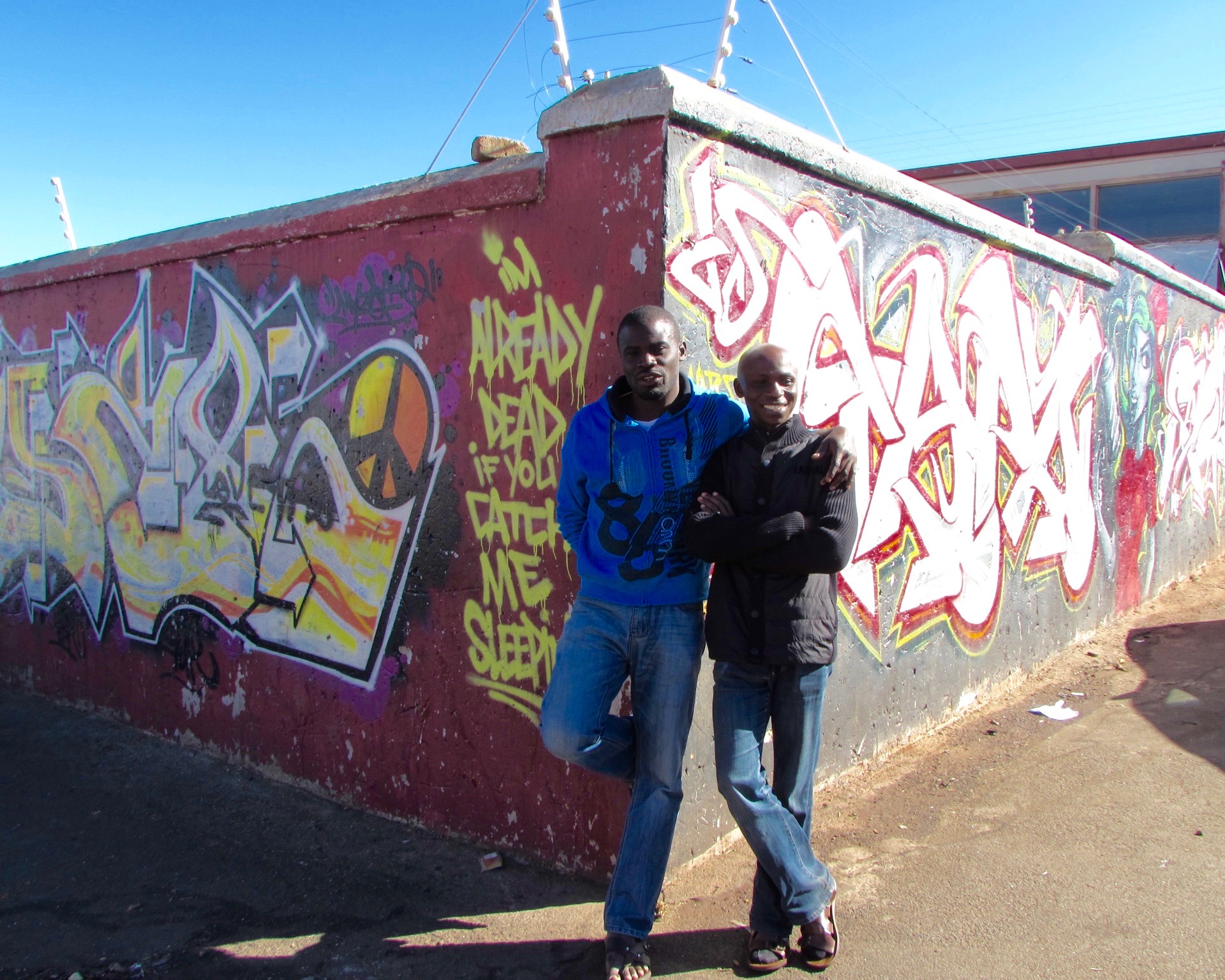Casual, confident and concerted, two young men proudly stand in front of brightly painted walls. The manner and style in which these walls are painted may be narrowly understood by some as graffiti or vandalism yet in Johannesburg, South Africa, also serve as public art; their visibility and presence unavoidable in part, due to the meaning and implications of the canvas. The young men in this photograph insisted that they stand at the corner of the building to ensure that both sides of the skillfully rendered walls would be documented. Surprisingly, the young men did not seek to hide their identity, instead they insisted, convivially, that they were the artists and posed proudly in front of their work. Yet, this photograph presents more than the artists and their creation; it displays a social relationship between two men and their connection with space.
Closer examination of the image reveals the purpose these walls serve; barriers working to fortify, securitize and divide between public and private space (Caldiera 2000). Across the city walls proliferate, topped with electrically charged barbed wire that is often in disrepair; reminiscent of apartheid. While apartheid formally ended in 1994, the lasting effects are evident as inequality remains high across the country with a reported Gini coefficient of 0.65 in 2011 (Lehohla and Shabalala 2014). Gauteng, the province where Johannesburg is located, has some of the higher documented rates of robbery and carjacking, with similarly high perceptions of crime (Teeger 2014). Therefore, fortification functions as security but also symbolically as an expression of power; a reminder of a separation between the rich and the poor and assumption of criminality among those outside the walls (Caldiera 2000). Yet, these walls have been repurposed as the artists physically and symbolically claim space by displaying their art for public consumption. This indicates a pride in their original work and stylistic abilities, and importantly, the reclamation of space; what Henri Lefebvre (2006) would call the oeuvre. The murals displayed on these walls reveal a beautiful freedom and recovery of spaces that were intended to be exclusionary.
The physical boundaries though meant to deter, have brought these two young men together in a relationship bounded through their art. They embrace warmly and casually as they claim space together in joy. Furthermore, we can see the life that emanates from their smiles and stance. These barrier walls operating to functionally exclude and symbolically remind of a subjugated existence, have been repurposed for the enjoyment of the passerby. The separation of space intended to break the spirit and remind outsiders of their relegated status has been made a mockery of. Instead these young men stand proudly in front of their readily supplied canvas of exclusion, jovially exclaiming, “Make sure you can see both sides!”
References:
Caldiera, Teresa P. R. 2000. City of Walls: Crime, Segregation and Citizenship in Sao Paulo. London. University of California Press.
Lefebvre, Henri. 2006. Writings on Cities. edited by Eleonore Kofman and Elizabeth Lebas. Malden, MA. Blackwell Publishing
Lehohla, Pali and Nozipho Shabalala. 2014. “Inequality in South Africa.” Development. 57(3-4): 497-511
Teeger, Chana. 2014. “Collective Memory and Collective Fear: How South Africans Use the Past to Explain Crime.” Qualitative Sociology. 37: 69-92

Commentary on Rachel Tanur's Works: Cuban Boys